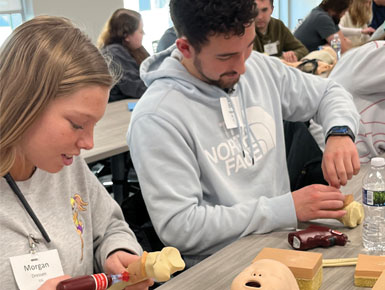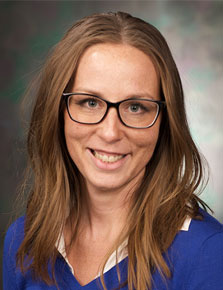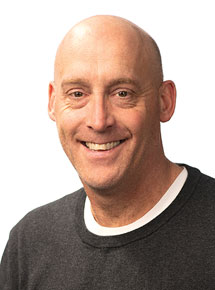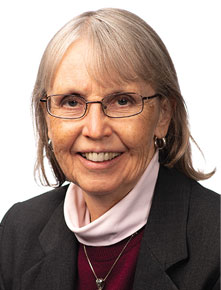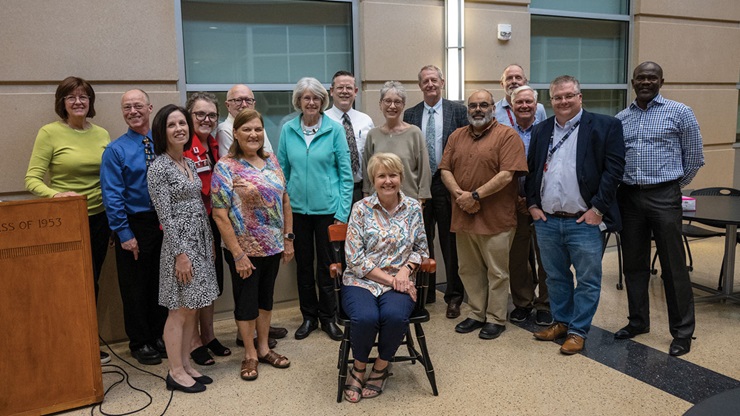Driven by Community Needs
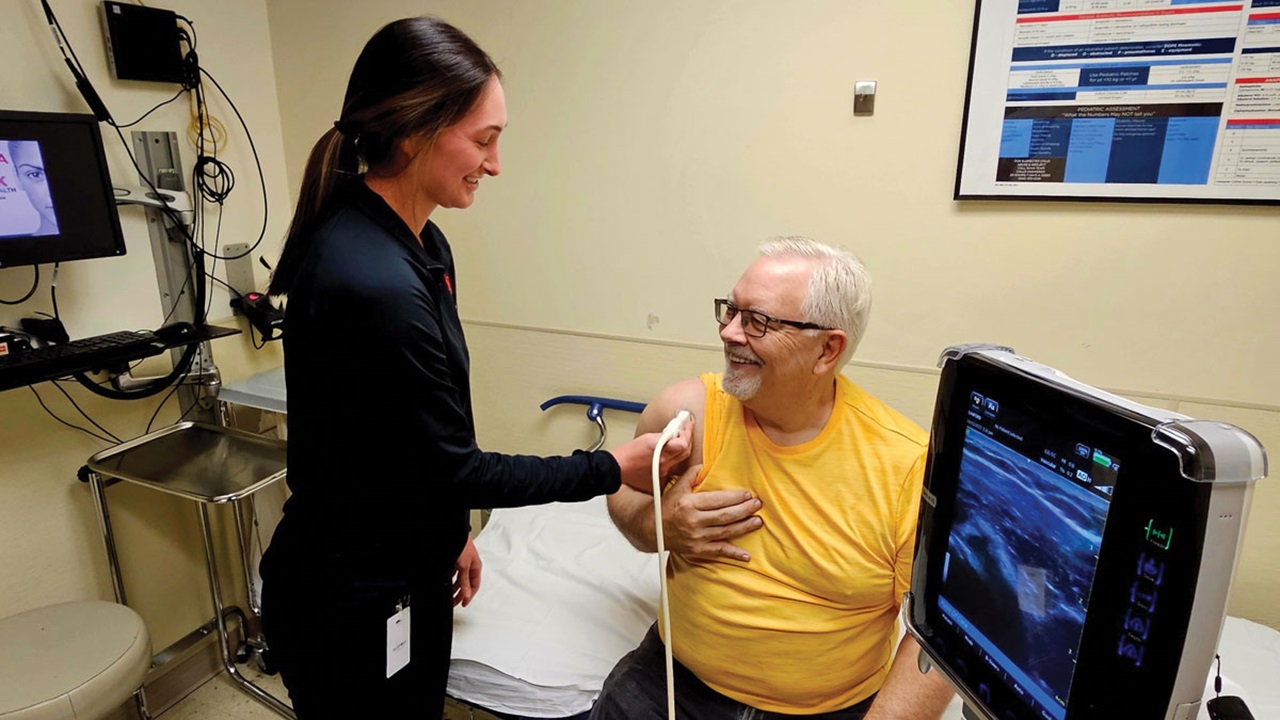
Throughout its 40-year history, the South Dakota Area Health Education Center (SDAHEC) has been charged with promoting healthy communities and connecting students to health careers. Today, SDAHEC continues its mission of fostering education for its constituents of K-12, higher education students, health care professionals and communities.
At its onset, with Dr. Bruce Vogt as director, the SDAHEC had five offices statewide. After programmatic changes at the federal level left little financial support, only the Yankton Rural AHEC remained viable, until 2009, when three-year grants were continually awarded to allow the South Dakota offices to continue to thrive. The South Dakota AHEC program office was established in September of that year within the University of South Dakota Sanford School of Medicine’s Department of Family Medicine. Dr. Susan Anderson was named chair of the Department of Family Medicine in 2014 and became AHEC program director at that time.
Almost every state in the U.S. has an AHEC, with about 250 centers nationwide.
The three South Dakota AHECs—Northeast AHEC in Aberdeen; Southeast AHEC in Yankton; and West River AHEC in Rapid City—are each governed by local boards of directors who determine what their local and regional needs and who their stakeholders are, so that opportunities in health care workforce development, as well anything else that might be of help to the communities, can be identified.
Staff members at each South Dakota AHEC continually investigate, identify and execute initiatives that are their respective region needs. For example, Northeast South Dakota AHEC saw a need for education in EMS hours in the northern communities, so staff members created the programming to meet that need.
“I’m always impressed at the level of enthusiasm AHEC staff members have. The number of outreach projects they introduce to health care is impressive,” Anderson expressed. “They are always willing to collaborate when folks bring a need to their attention. They are creative, flexible, jacks of all trades—the people who both come up with the ideas as well as implement them.”
CRHI: Driven by Community Needs
The Center for Rural Health Improvement (CRHI) has similar, but more specific, goals to attain. It supports a portfolio of community-facing programs by connecting them to the expertise and resources of the university, in the form of project and grant management; pre- and post-award, data and research support; program implementation and evaluation services. In addition to meeting community needs, the CRHI works to create more research opportunities for medical students to be involved in.
Specifically, the goal is to come up with more grants, contracts and evaluations and be the connecting point that brings resources and communities together for healthier communities. Efforts are focused on social determinants of health, work force development, grant writing, data collection, evaluations, research, project management policy analysis and public affairs activities, all driven by community needs.
The CRHI is growing the research and community-facing arm of SSOM and USD. Erin Srstka, director of the CRHI for the past two years, says the office staff has grown exponentially from a modest group of three to a more robust group of seven. Srstka herself started out as a part-time grant writer and as the need for more grants grew, she became a full-time employee in the short span of two years.
“I’m really proud of the growth we’ve seen in a short amount of time,” said Srstka. “It demonstrates the community-based work that’s happened and the research opportunities we’ve facilitated. The SSOM leadership support has been great, and we have a rock star team who has grown in its own respect to create awesome things.”
Working with health systems, nonprofits, cities, counties and the public sector has the CRHI seeing much success and many opportunities brought to South Dakota. The CRHI has secured federal, state and county grants totaling more than $6.5 million. An average of $1.6 million per year has been brought into the state, an indication of how much need exists.
The center’s portfolio of community projects across the state connects SSOM expertise to communities to build healthier communities. “Interdepartmental collaboration is key to what we do. At the end of the day, we are here to improve South Dakota through workforce resources, to support communities as an ally, in whatever way we can,” said Srstka. “We can bring university resources to a project; our interdisciplinary nature allows for the entire university to work together. We have a lot of expertise to tap into.”
The next challenge for the CRHI is to maintain its growth in a sustainable way and demonstrate the SSOM reach. In the next five years, Srstka hopes to develop other types of partnerships to help grow student opportunities, more student workers and a pathways program to develop assistantships.
HOSA: Connecting Interest with Need
South Dakota HOSA is one program that was born from AHEC. HOSA: Future Health Professionals is a student organization whose curriculum is aligned with career tech education standards and focused on recruiting students into the health care pathway. Through local chapters, SD HOSA provides education activities and procedures encompassing health care careers and topics for students in a multiple number of courses.
Through partnerships with the AOA Honor Medical Society at USD, the USD School of Health Sciences and Sanford Health, SD HOSA students can make connections and take advantage of opportunities that will help propel them into the health care careers they desire.
“South Dakota HOSA aims to build confidence in students aiming to work in health care as future health professionals,” explained Brock Rops, executive director of SD HOSA. “The more opportunities and engaging resources we can offer them, the more likely they are to have that confidence to continue on that pathway.”
Nationally, HOSA has 250,000 members. At the local level, since its inception nine years ago, 42 chapters have been established with a membership of more than 1,000. Chapters meet monthly with health professions speakers, practice for competitive events and complete service-learning projects.
At the state level, the SD HOSA State Leadership Conference annually welcomes around 900 attendees, where they engage in competitions, academic sessions, a keynote, banquet and a college and career fair. SD HOSA also hosted three fall leadership L.A.U.N.C.H. academies for over 230 students who engaged in activities involving leadership development, networking and SD HOSA-future health professionals’ best practices. In addition, SD HOSA offered $15,000 in college scholarships to members.
As the health care workforce continues to have high needs, SD HOSA is stepping up to help, said Rops.
“I am really proud of the synergy we have created among a number of collaborating entities. We have made some strides with our private, public and large and small health care organizations as they partner with these local schools,” he said. “A rising tide lifts all ships, and we have built such a great team of teachers, students, administrators and health professionals all with the same goal of filling the pipeline of future health professionals.
“South Dakota HOSA is the resource for all things health career related,” Rops continued. “We want to be the clearinghouse for the questions any student has in South Dakota aiming to pursue health care. We are building a better candidate as a foundation these students can use as a springboard. Abraham Lincoln once said, ‘If you give me six hours to chop down a tree, I will use four of them sharpening my axe.’ South Dakota HOSA is the stone that sharpens the axe. These kids are still looking for that tree, but when they find it they will be ready to get to work.”
Tribal Diabetes Prevention
As diabetes grant coordinator with the Department of Family Medicine, Valborg Kvigne’s primary focus is to provide data analyses and program evaluation for Tribal Diabetes Programs in both Dakotas, Iowa and Nebraska, by tracking trends, identifying strong areas of the programs and areas that could be strengthened.
The trends and data analyses help the Tribal Diabetes Program staff influence policies, implement changes in the environment and identify the participants who are most in need of interventions. For example, a school may establish a policy regarding distribution of high sugar foods and beverages in the school or a decision could be made to replace soda with water in vending machines. Kvigne prepares materials describing the data results that are used by the program staff and community leaders to make changes in the community, such as improving walking paths or improving access to healthy foods by establishing community gardens. Ultimately, she says, the goal of her work is to improve health outcomes.
Some of the tribal programs have been tracking outcomes for eight or more years and have been able to identify the impact of COVID-19 in their communities. Tracking trends of obesity and/or diabetes helps the staff make decisions for interventions, education, fitness and healthy eating program activities.
In her 18-plus years in this role, Kvigne has worked with every one of the 19 tribes in the four-state area. “I am grateful for the opportunity to work with the tribal diabetes programs who are committed to reducing the rates of obesity and diabetes,” said Kvigne.
Long-term Success
Vital rural communities rely on the health of their populations. Through connectivity and collaboration, the efforts stemming from the Department of Family Medicine at SSOM can help fill out the workforce and provide opportunities for people to live longer, healthier lives.
“The dedication and passion our outreach staff members have is unmatched,” said Anderson. “The people behind all these efforts are dedicated to health improvement for all South Dakotans. By continuously seizing opportunities to address vulnerabilities and inequities in health care, we will see long-term success for the state of South Dakota.”
South Dakota AHEC is committed to providing the services and resources for its stakeholders by connecting students to health care opportunities and helping health care agencies meet their workforce needs. Below are some highlights of the past year.
West River AHEC, Rapid City
• K-12 Outreach: Over 1,550 students explored health care careers with hands-on activities such as the MEGA Brain, a medical escape room, the Body Interact Table, alcohol impairment goggles, skeleton and brain puzzles, CPR manikins, nutrition and exercise learning tools and Glo Germ™ handwashing training.
• The third annual Mission: Possible conference connected 50 health care professionals affiliated with various areas of mental illness and substance abuse.
• The third annual Rural Health Equity Summit, held in Oacoma, was devoted to the topic of Community Health Workers (CHWs) in South Dakota and efforts to increase health equity in rural communities.
Northeast South Dakota AHEC, Aberdeen
• Last year, three Scrubs Camps brought in 260 high school students from the Aberdeen and Huron area high schools for sessions on nursing, health information management, radiology, med/fire rescue and much more.
• Camp Med, a part of the South Dakota Department of Health’s career exploration initiatives to create interest in health careers among middle schoolers, had more than 725 students participate last year.
• Northeast SD AHEC hosts and participates in various K-12 and community programming events to promote health careers, healthy habits and health education in the communities. In one event in October 2022, 210 high school students participated.
• Northeast SD AHEC had a large presence at the 2022 South Dakota Emergency Medical Services Association (SD EMSA) Annual State Conference, which had 510 participants in person and online, with the goal of providing technical support and streaming educational sessions to EMS providers in the rural and frontier communities. Additionally, Northeast SD AHEC works closely with the SD EMSA Instructor Coordinator Society to provide education and training to current EMS educators across South Dakota. Through other involvement, Northeast SD AHEC reached 205 EMS professionals from across the state.
• Northeast SD AHEC has developed and hosts resource libraries for South Dakota, including the Telemental Health Resource Library, an EMS Resource Library & Directory, and K12 Educator Resources. In 2022, these resource libraries have had 750 visits virtually and the education resources have educated around 200 students in the area.
Southeast South Dakota AHEC, Yankton
• Southeast SD AHEC has championed disaster preparedness for two decades. In the past 10 years, over 3,800 students have received training, with 1,700 plus becoming certified in Core Disaster Life Support (CDLS) from the National Disaster Life Support Foundation (NDLSF).
• In spring 2022, the SESD AHEC added a second disaster training day that educated more than 100 students from Dakota Wesleyan University, Mitchell Technical College and Presentation College. Along with 11 USD health disciplines, a total of nearly 400 students participated in didactic and hands-on training in disaster response. SESD AHEC also supports disaster training for 200 nursing students at South Dakota State University each year.
• About 120 high school students in the southeast South Dakota area attended a Scrubs Camp.
• Students from USD, SDSU and Mitchell Technical College learned how to collaborate with other disciplines, as well as about professionalism, emotional intelligence and various leadership styles at the Learning to Lead Student Workshop.
• Yankton Camp Med: SESD AHEC hosted Camp Med for 200 students at Yankton Middle School in May 2022. Speakers from various careers shared information about their career and education and had students participate in a quick activity related to their topics, including oral care, CPR and healthy vs. impaired lung simulations.
• Interprofessional Education: Rural Experiences for Health Professions Students (RHEPS): REHPS is a three- to four-week summer experience that pairs students from two different health professions together at each site for a holistic view of rural medicine involving 30 students in 15 rural communities.

